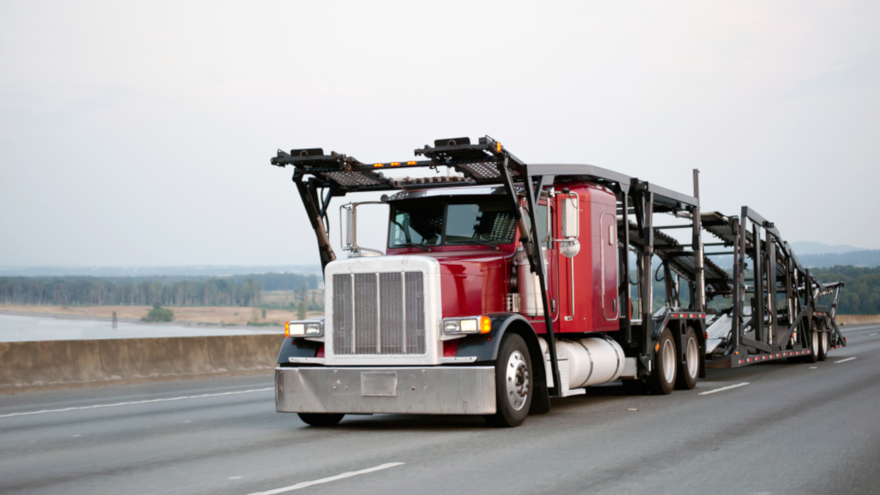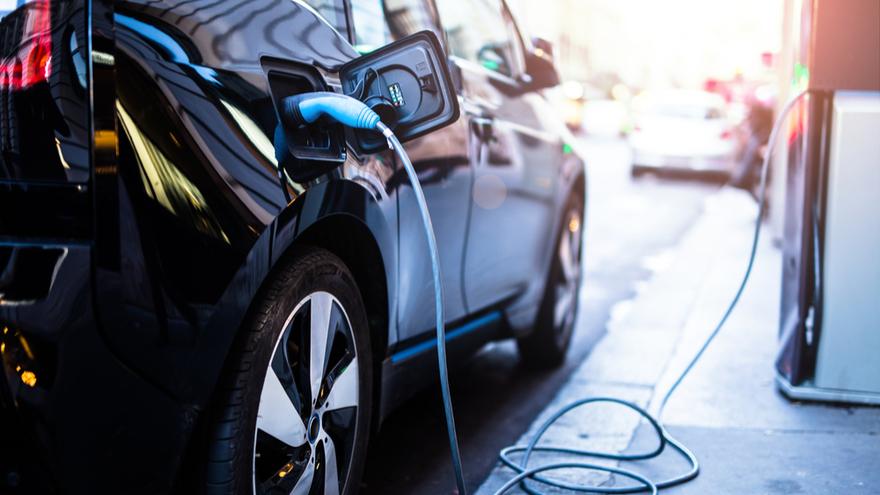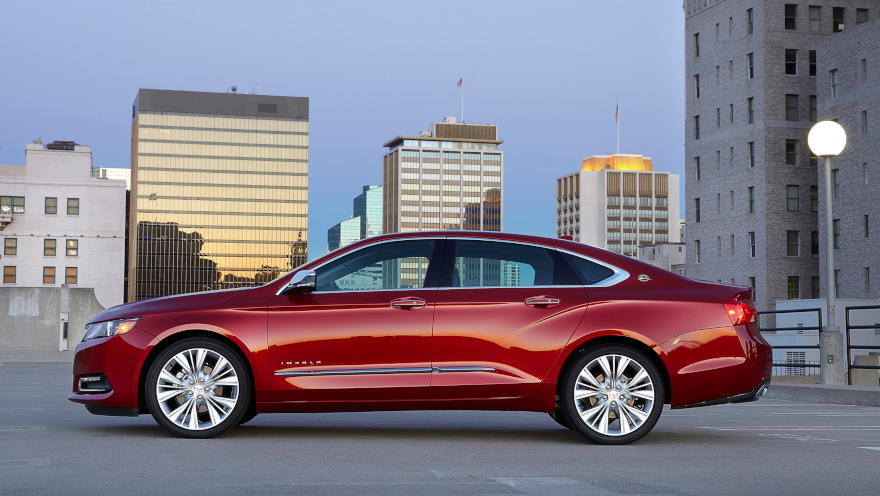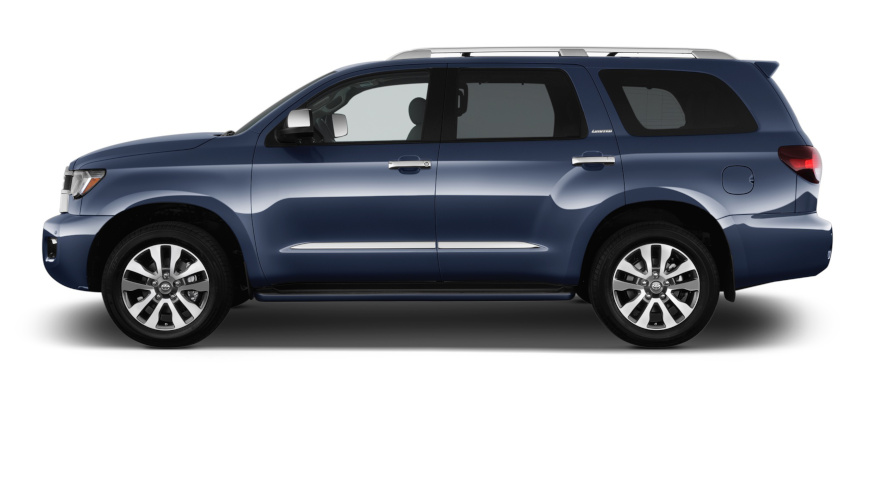Lots of people like vehicles such as the Chrysler Pacifica, Honda Fit and Jeep Wrangler.
According to Autotrader, pets and pet owners like those vehicles, as well.
Autotrader says those and other vehicles on its Best Cars for Dog Lovers list this year are safe and comfortable for those pets and their owners.
Celebrating National Dog Day for the sixth year in a row, Autotrader has revealed its list of Best Cars for Dog Lovers. For this year’s National Dog Day on Monday, Autotrader has also created limited-edition goggles for dogs that it says will keep those pets safe and stylish during car rides with the windows down.
Autotrader is offering a special-edition website, Dogtrader.com. At that site, dog owners can enter for a chance to win the limited-edition goggles through Sept. 12.
Autotrader will donate funds as part of the program to Adopt-a-Pet.com, which works to help homeless shelter dogs move into loving homes.
Stating that it is “committed to shining a light on dog adoption,” Autotrader says that on its Dogtrader.com site, dog lovers can search for local puppies and dogs in their area and help with the real mission of National Dog Day: to get homeless dogs out of shelters and into loving homes.
Editors at Autotrader produced a list of the best vehicles for shoppers looking for the perfect new car for traveling with their four-legged companions. Autotrader says that although comfort is an important factor in your vehicle choice, safety is most important. The features of the cars on this list, such as a level cargo floor and rear air vents, are geared toward keeping human and canine passengers safe.
One of those vehicles is the 2019 BMW X2, which Autotrader says features comfortable faux-leather front seats for driver and pet. In back, a large cargo area with seats can be folded flat. The large hatchback door helps with loading, and several BMW pet-friendly accessories include rear-seat protectors and various sport bags that hang from the front seat headrest. These bags work well for storing treats, toys and water bowls, Autotrader said.
“At Autotrader, our goal is to help people navigate the car buying process through our extensive lists of vehicles that suit consumers’ various needs,” Autotrader executive editor Brian Moody said in a news release. “With this in mind, we came up with a list of cars that offer both comfort and convenience features pet owners should consider if they're buying a car.”
Those cars on Autotrader’s list of 10 Best Cars for Dog Lovers of 2019 are as follows, unranked and in alphabetical order (2019 model year):
— BMW X2
— Buick Regal TourX
— Chrysler Pacifica
— Honda Fit
— Jeep Wrangler
— Mitsubishi Outlander PHEV
— Subaru Crosstrek
— Tesla Model 3
— Toyota RAV4
— Volvo V60 Cross Country
JMN Logistics’ nearly $3 million investment into 16 new automotive transport trucks marks the company’s largest single capital investment into its fleet.
JMN said it made the investment, announced on Tuesday, to meet increased demand for its core transport business. Deliveries of the new assets for the automotive transport company have begun, with plans for delivery completion by year-end.
The company said it has selected several cab manufacturers based on its customers’ needs. JMN, which is privately owned and operated out of the St. Louis area, also said it plans to equip the cabs with Cottrell trailers.
“This is an exciting time for JMN, as we are expanding our fleet to keep up with demand,” JMN chief commercial officer David Larson said in a news release. “Plus, it is always exciting to hand over the keys to these beautiful new rigs to our valued drivers. As an asset medium based company, it is great to know that we are able to allocate revenues re-investing into our fleet and drivers.”
The company said in a news release that the asset investment is a continuation of JMN’s commitment to the automotive transport industry. JMN also said it is actively hiring drivers to support the investments, and it added that it is also investing in offering “attractive benefits to its valued transportation team.”
Transportation management system company Super Dispatch says that with its new end-to-end car shipping platform, shippers, brokerages and carriers can connect and communicate “where other technologies have failed them.”
Super Dispatch is aiming for its new platform to become a one-stop-shop for effective communication between car transport carriers, brokers and shippers.
With the new platform, the company says that shippers and carriers will be able to post, price, offer, accept, track, inspect, invoice and pay for loads. And they will be able to do that all in one place.
In releasing the platform, Super Dispatch notes that the auto transport industry over the past decade has expanded, and demand for car shipping has increased. But transportation management technologies have unfortunately not caught up to the speed and accuracy required of carriers and shippers.
Super Dispatch says that comparable products have historically served as in-house software products for auto transport’s largest companies.
Included in the new platform are the existing Carrier TMS, a connected Shipper TMS and a smart load board.
The company said that as the marketplace grows, through the use of various industry-specific technologies, millions of cars are found, assigned, inspected, and delivered.
Super Dispatch said that many management systems exist for shippers, brokers and carriers, but their communication with other technologies is often inadequate.
With Super Dispatch’s end-to-end platform, all auto transport companies will be able to run their businesses internally and experience more direct communication with each other.
“We are creating a better way to transport cars with new technology that solves major problems for companies in auto transport,” Super Dispatch chief executive officer Bek Adullayev said in a news release.
KAR Auction Services says the new consumer-direct vehicle transportation and logistics services business of its CarsArrive Network will provide services directly to consumers. Those consumers can be individuals or corporate/commercial clients.
The retail relocation business is called CarsArrive Auto Relocation, and it will allow consumers to ship their car anywhere in the United States. Consumers can visit CarsRelo.com and use the services from any desktop or mobile device.
Across the country, a network of CarsArrive’s more than 150 service centers offer secure locations. The locations feature paved lots and 24-hour surveillance for vehicle marshaling and storage.
The five levels of transportation services for CarsArrive Auto Relocation — or CarsRelo — are Carrier Direct Service, Service Center to Service Center, Service Center to Door, Door to Service Center or Door to Door.
CarsArrive director of business development Erin Almand said in a news release that CarsRelo.com offers instant quotes along with pricing and timing transparency. When visiting the website, customers can choose the type of service they want and also receive a quote. They can book the order, and after they schedule dates for pickup or drop off, they will see delivery of their vehicle in 14 days or less. A comprehensive protection plan covers all vehicle moves.
CarsArrive Auto Relocation performs more than 2 million vehicle relocations a year and has handled more than 10 million vehicle moves. Its vehicle carriers ship cars, trucks, SUVs and motorcycles. CarsArrive Network’s North American network of automated vehicle transport services includes more than 4,500 registered carriers representing more than 30,000 trucks.
“The benefits to the consumer are enormous,” Almand said. “We have the resources to deliver a personal experience — when a customer calls, they are connected to a person right away. We have the most shipping options in the industry, and we transport your vehicle safely and efficiently.”
“Individuals need access to dependable transportation services for their personal vehicles, whether they’re moving across the country or across the state,” said CarsArrive president and chief executive officer Michael Briggs. “CarsRelo meets that need for consumers, and our end-to-end services make shipping your car with us faster, safer, and easier. We bring the strength and confidence of the entire KAR platform to help us deliver value, convenience, and exceptional service.”
Projected growth in plug-in electric vehicles means challenges and opportunities for distribution utilities, according to Navigant Research. If PEVs are not managed intelligently, they can threaten overall grid reliability. But if they are aggregated and optimized with smart controls, they can offer grid services under new business model platforms such as microgrids and virtual power plants.
A new Navigant Research report says PEVs could become a viable enabling technology for microgrids and VPPs within the next five years.
“While the primary purposes of these platforms differ — resiliency versus bidirectional value exchanges — they share the common goal of extracting value from distributed energy resources portfolios,” Peter Asmus, research director with Navigant Research, said in a news release.
The report, “Implementing EV-Based Grid Services for Microgrids and VPPs,” covers the best methods of developing a strategy to best extract grid services embedded in plug-in electric vehicle batteries, charging loads and charging infrastructure to help support microgrid and VPP deployments.
For PEV ecosystem stakeholders to succeed in the market, they should support the development of communication standards, shape regulations on frequency regulation services and study new energy as a service (EaaS) business models, according to the report.
At the same time, the report says, microgrid ecosystem stakeholders should study the value that PEVs provide internally to the microgrid during emergency islanding and pair PEV fleets with stationary storage devices. VPP ecosystem stakeholders should use advances in artificial intelligence, the report says.
Those stakeholders should also advocate for market reforms and look for distributed energy resource management system market opportunities.
The report covers how to develop the best strategy to extract grid services embedded in PEV batteries, charging loads, and charging infrastructure to help support microgrid and VPP deployments.
The study also:
— defines the grid services possible from PEVs,
— showcases global deployments that tap PEVs as DER for microgrids and VPPs, and
— identifies lessons learned from deployments that point to market opportunities.
In addition, the report provides actionable recommendations for PEV, microgrid, and VPP stakeholders when implementing PEV-based applications within the next five years. An executive summary of the report is available for free download on the Navigant Research website.
Automotive logistics provider ACERTUS has appointed Jason Onsen to chief financial officer. Onsen previously served in top finance roles for Amazon and for St. George Logistics.
In his most recent role as vice president and corporate controller for St. George Logistics, Onsen led a 30-person finance team at five locations, built transaction-based models to validate direct costs, and integrated five acquisitions.
Prior to serving in that role for St. George Logistics, Onsen was finance leader at e-commerce marketplace, Amazon. Onsen financially managed the last mile delivery and middle mile transportation networks for that company.
Onsen was previously with Caterpillar for nine years, serving in various positions before becoming senior vice president of Neovia, formally Caterpillar Logistics. At Neovia, a $1 billion business, he reported directly to the chief financial officer, overseeing a team of 100 employees in nine countries.
“Jason’s financial and logistics background, combined with his extensive experience scaling innovative companies, will be tremendously valuable in our next phase of growth as we further our mission to provide a complete, end-to-end automotive logistics offering,” ACERTUS co-founder and chief executive officer William Billiter said in a news release.
“As ACERTUS continues to grow rapidly, we saw the need to level up our management team to support current and future expansion. His global experience will benefit our customers and employees, and I have no doubt what he brings to the table aligns well with our culture. We are thrilled to have him on board," Billiter continued.
General Motors president Mark Reuss believes that autonomous vehicles “will change people’s lives forever, just as the automobile itself did more than a hundred years ago.”
Leaders of The Henry Ford and its venue The Henry Ford Museum of American Innovation believe that, as well. The venue has acquired one of General Motors’ first self-driving test vehicles, a modified pre-production Chevrolet Bolt EV.
The Henry Ford president and chief executive officer Patricia Mooradian said in a news release that “self-driving capabilities will fundamentally change our relationship with the automobile.”
“As the home of the historic vehicles that have shaped that relationship today, this acquisition is paramount in how we tell that story in the future,” she said.
The Henry Ford notes that the pre-production Bolt EV is one of GM’s first test vehicles to operate on public roads autonomously. Representing a milestone for The Henry Ford as well. It is the first autonomous car to be added to the museum's collection.
The vehicle is now on display next to the 1959 Cadillac El Dorado and is located near the entrance of the Driving America exhibit inside Henry Ford Museum of American Innovation.
“The Henry Ford is a treasured institution where past and present innovations are documented and displayed, and GM is proud to provide our autonomous test vehicle to serve as an inspiration to the innovators of tomorrow,” Reuss said.
The vehicle’s features give it a feel of being a car of the future. GM developed the Bolt EV in close collaboration with software startup Cruise Automation, according to Henry Ford. The vehicle is equipped with cameras, radar and LIDAR sensors as well as an on-board computer. Using a sensing system and compute platform, the vehicle can “observe the world around it in 360 degrees” and make near real-time decisions to navigate the road safely, Henry Ford noted. The venue added that by the summer of 2016, more than 40 test vehicles were on the streets of San Francisco, Calif., and Scottsdale, Ariz.
Henry Ford notes that serious experiments with self-driving vehicles began around the mid-1920s. General Motors’ “Futurama” exhibit at the 1939 New York World’s Fair featured a display of imagined automated highways guiding cars by radio control. GM and RCA in the 1950s built a section of test road equipped with electromagnetic circuits to control vehicles along the route.
GM and Cruise Automation are now working on the Cruise AV, which they say is the first production-intent self-driving car without any manual controls.
“Industry leaders and analysts largely agree that autonomous vehicles are coming to the consumer market. It’s not a matter of if, but of when,” The Henry Ford noted in a news release.
The Henry Ford curator of transportation Matt Anderson noted that the self-driving vehicle is “the most fundamental shift in what a car should be since the Model T turned the automobile into an everyday item.”
“While this first-generation test vehicle was quickly followed by more advanced versions, it made a bold statement that a major auto manufacturer was ready to move quickly on making self-driving cars a reality,” Anderson said.
Of the top 10 car makes on the road in 2018, five were American, and five were foreign makes. Sixteen of the top 25 car models are sedans.
Of the top car makes and models on U.S. roads in 2018, Chevrolet and Ford are the dominant automakers, combining for more than one-quarter of all cars on the road.
Those are just a few of the tidbits of information coming from a new study of the most popular car makes and models on U.S. roads in 2018. The study from Digital Media Solutions shows that the top 10 car companies in America— including Chevrolet, Ford, Nissan, Dodge, Toyota, Honda, Hyundai, BMW, GMC and Chrysler— make up more than two-thirds of cars currently on the road.
BMW is the only luxury car brand in the top 10 car company list. No sports cars, minivans or luxury cars made the top 25 car model list.
Additional highlights from the DMS Auto Insights include the fact that the top 25 car models in the U.S. combined make up more than one-quarter of all the cars on the road. Six of the top 25 car models are SUVs, and three are pickup trucks.
Breaking the top car models down by segment, the sedans on the list are the Chevrolet Cruze, Chevrolet Impala, Chevrolet Malibu, Chrysler 200, Chrysler 300, Dodge Charger, Ford Focus, Ford Fusion, Honda Accord, Honda Civic, Hyundai Elantra, Hyundai Sonata, Nissan Altima, Nissan Sentra, Toyota Camry and Toyota Corolla.
The Chevrolet Equinox, Chevrolet Tahoe, Ford Escape, Ford Explorer, Jeep Grand Cherokee and Nissan Rogue are the top SUVs, and the Chevrolet Silverado, Dodge Ram and Ford F-150 are the top pickups.
Six of the top 25 car models are compact cars: Chevrolet Cruze, Ford Focus, Honda Civic, Hyundai Elantra, Toyota Corolla and Toyota Sentra. Three of those—the Chevrolet Cruze, Chevrolet Impala and Ford Focus— were canceled for 2019.
Additional items of interest:
— Chevrolet, the most popular car brand in America, has six of the top 25 car models.
— The Nissan Altima is the most popular car model in the U.S.
— The Ford F-150 is the most popular pickup truck in America.
— The Chevrolet Equinox is the most popular SUV in America.
HyreCar has launched a new application that it says will allow drivers to more easily verify their identity when digitally applying to rent a car through HyreCar’s new mobile interface.
HyreCar, which describes itself as "the carsharing marketplace for ridesharing," has launched the HyreCar mobile application for Apple iOS and Android devices to streamline the new driver onboarding and verification process.
The company developed the application with identity verification technology company Mitek. The technology, which the company says is proven to reduce fraud, can expedite the booking and verification process by 30 percent and lower ID document forgery in the verification process by up to 20 percent.
Partly because of these technology enhancements, HyreCar says it has scaled annual rental days from under 400,000 for the fiscal year ending Dec. 31, 2018 to an annualized run rate of more than 550,000 rental days through the first two months of 2019.
HyreCar chief executive officer Joe Furnari said in a news release that reducing friction in the company’s customer conversion channels is expected to “accelerate revenue to the top and bottom lines.” He added the company expects risk reduction through the Mitek integration to reduce overhead costs.
Mitek chief executive officer Max Carnecchia added that his company wants to provide trust and convenience with each digital transaction and that Mitek seeks to support HyreCar in its mission to “safely, securely and seamlessly onboard more rideshare drivers.”
“Empowering a good user experience while verifying new driver identities is the core focus of our partnership with HyreCar,” Carnecchia said.
Today’s vehicles have the potential to reach 200,000 miles.
With the right maintenance and care, that is.
The latest study from iSeeCars determined which models have the highest percentage of vehicles that reached 200,000 miles. For the study, iSeeCars.com analyzed more than 13.8 million pre-owned units sold in 2018 from model years 1981 through 2018.
Large SUVs and pickup trucks appear most often on the list, and earning the top spot is the Toyota Sequoia full size SUV.
Full-size SUVs are the vehicles most likely to reach 200,000 miles or more, according to iSeeCars.
But iSeeCars chief executive officer Phong Ly said in a news release that although large SUVs and pickup trucks appear most often on the list, customers can also find a sedan or minivan “that is proven to be a high-mileage hauler.”
iSeeCars analyzed more than 13.8 million cars sold in 2018 to determine which models have the highest percentage of cars to reach 200,000 miles. At least 2.2 percent of the top 14 models reach that mileage and that is almost three times the overall average. The mix of those models includes nine SUVs, a hybrid, three pickup trucks, a sedan and a minivan.
More than 7 percent of Toyota Sequoia full-size SUVs reach 200,000 miles, and Ly said because full-size SUVs are built on truck platforms, they offer the durability of a truck and the cargo space for up to eight passengers.
“Toyotas are known for their reliability, and our findings show that these capable family haulers are able to go the distance for their owners,” Ly said.
Three pickup trucks, including the eighth-ranked Honda Ridgeline, the 10th-ranked Toyota Tacoma and the 11th-ranked Toyota Tundra, make the list. Ranked 12th is the Toyota Avalon, which is the only sedan on the list.
The Honda Odyssey is the lone minivan on the list.
When trucks and SUVs are excluded, Japanese automakers account for most of the longest-lasting cars.
Luxury, sport, and green cars difficult to measure
iSeeCars also determined the eco-friendly vehicles that are most likely to reach 200,000 miles. But Ly said because many hybrid and electric vehicles did not come into the marketplace until recently, few models have been on the road long enough to reach the 200,000-mile mark.
iSeeCars looked at luxury vehicles to determine the luxury cars that are most likely to reach 200,000 miles, but Ly stated that because luxury cars are often leased, they are less than half as likely to reach 200,000 miles when compared to the average vehicle.
The company also sought to determine the longest-lasting sports cars, but because drivers of those vehicles are not usually daily drivers, they are less likely to reach 200,000 miles, Ly said.
The first-ranked Audi TT, the second-ranked Mazda MX-5 Miata and the third-ranked Ford Mustang are the three sports cars that are above the segment average.
Longest-lasting brands
Toyota earned the top spot as the vehicle most likely to reach 200,000 miles. Honda placed second.
The remaining brands scoring above average are all American. GMC, Chevrolet, Ram and Ford ranked third through sixth.
These vehicles most likely to reach 300K
Six models are at least twice as likely as average to achieve the 300,000-mile milestone. The Ford Expedition earns the top spot, followed by the Toyota 4Runner, Toyota Sequoia, Chevolet Suburban, Toyota Tacoma and Toyota Tundra.
Models with highest percentage over 200K
—Toyota Sequoia
—Chevrolet Suburban
—Ford Expedition
—GMC Yukon XL
—Toyota 4Runner
—Chevrolet Tahoe
—Toyota Highlander Hybrid
—Honda Ridgeline
—GMC Yukon
—Toyota Tacoma
—Toyota Tundra
—Toyota Avalon
—Honda Odyssey
—Lincoln Navigator
Other key findings
—Seven full-size SUVs account for half of the list.
—In the car category: Toyota accounts for five models on the list including the Avalon in the top spot along with the fourth-ranked Sienna minivan, the fifth-ranked Prius hybrid, the eighth-ranked Camry sedan and its ninth-ranked hybrid counterpart, the Camry Hybrid.
—In the truck category: The top-ranked Honda Ridgeline is more than twice as likely than the average vehicle to reach 200,000 miles.
—Six vehicles are twice as likely than average to reach 300,000 miles, with the Ford Expedition earning the top spot.











